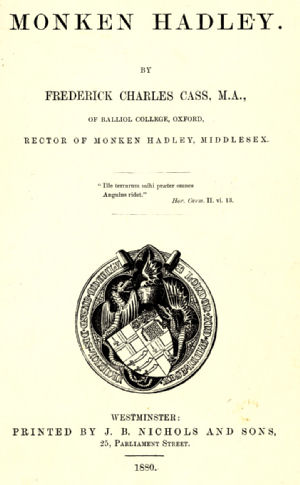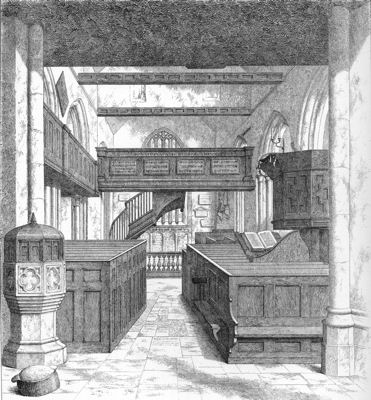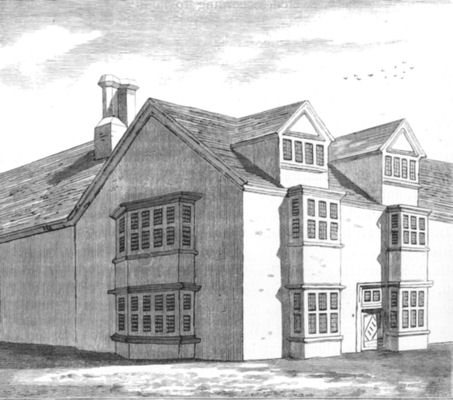 |
|
|
Family trees - mainly prior 18th century |
|
|
|
|
NOTE; At the time this book was written the parish was in Middlesex. |
|
Monken Hadley
Frederick Charles Cass
Nichols & Sons, London
1880
|
Frederick Cass also published The Parish of South Mimms (1877) and The Parish of East Barnet (1885-92), both of which are available on CD from ArchiveCDBooks. |
This book provides a detailed and well research account of Monken Hadley, with source references as appropriate, and the detailed index makes up for the lack of proper chapter headings. There are many family trees but most end in the 17th century. In addition to the engravings shown here the are a number of coats of arms. Details are given of a number of wills and extracts from other documents are included.
The Cresset (beacon) on the tower is described as follows:
The cresset that surmounts the tower turret, and forms so distinguishing and well-known a feature of the church, may probably stand in the position of successor to some more ancient landmark, which, in a former age, crowned the elevated tableland on which the church stands. We know, at all events, that in the reign of Elizabeth, and subsequently, this locality bore the designation of Beacon's hill. During the great gale of 1 Jan. 1779 it was blown down, and on Monday, the 11 of the same month, a Vestry meeting was convened to consider about the repairs of the roof of the church, but there is no express mention of the beacon. The last occasion of its illumination was the night that followed. the Prince of Wales' marriage, 10 March 1863.
Respecting its origin n. nothing is certainly known, though it is natural to conjecture that a position so commanding might have been chosen either for arousing and conveying intelligence to the surrounding country, or with the object of guiding the steps of wayfarers through the adjacent forest.



